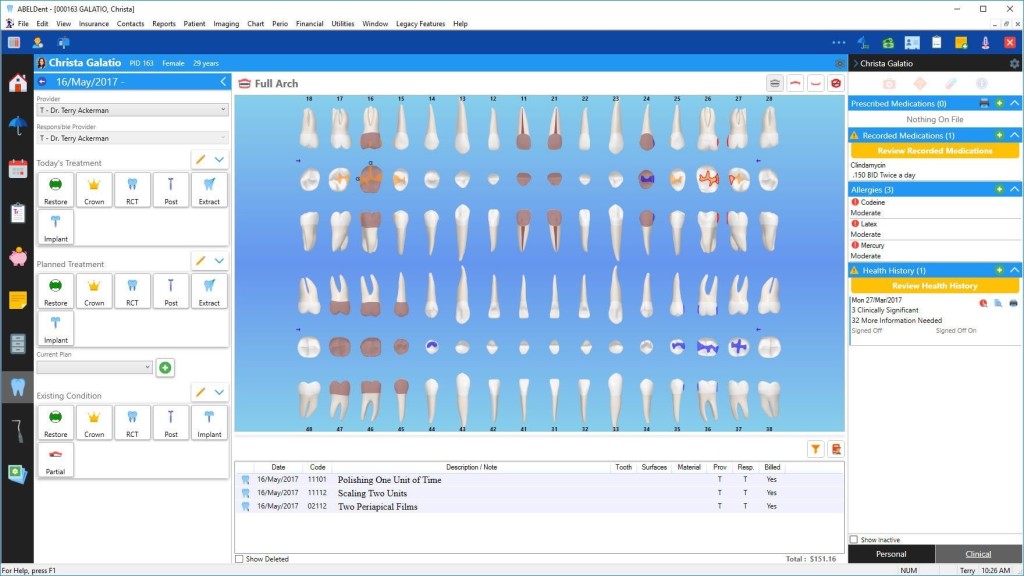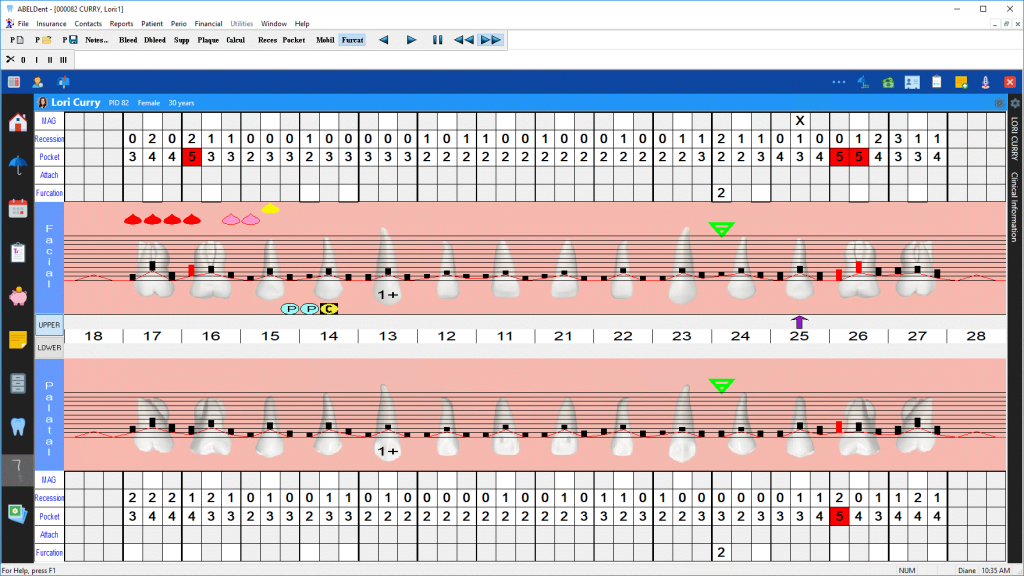Have you decided to bite the bullet and replace your paper patient charts with electronic ones? Or, have you already done this and are disappointed with the results?
First let’s quickly review why it’s still a good decision and then look at what software features are essential to make electronic charting work as smoothly as possible.

The Benefits of Electronic Clinical Records
Fully electronic patient records consist of four main components:
- Restorative History – pre-existing conditions, new conditions and restorative treatment
- Periodontal History – pre-existing conditions and periodontal condition over time
- Clinical Notes – recording of observations, medical conditions/history, additional factors and recommendations
- Recommended treatment plan/s
Here’s why it makes sense to store all of the above electronically:
- Full Patient Record Integration – Administrative (already in electronic form), and clinical information can work in concert to enable optimal treatment outcomes, streamlined workflows and improved communication – this synergy is simply not possible with unconnected, multiple paper systems.
- Accessibility – The patient record is available at any place on the network and can’t be misplaced like paper charts.
- More Complete and Legible Records – Electronic information promotes more thorough and legible recordkeeping without the investment of extra time.
- Labour Savings – Pulling, organizing and refiling patient charts is no longer required.
- Space Savings – Electronic systems free up valuable space for more productive use.
- Reduced Costs – This saves the money formerly spent on labour, paper charts, stationary and storage.
- Increased Security – Electronic charts can be backed up and protected from catastrophic events.
- Longer-lasting Records – Electronic charts are impervious to wear and tear.
- Chart Integrity – Electronic charting systems can automatically name, date, and time-stamp entries which ensures data integrity and regulatory compliance.
- Dynamic records – A new and separate cumulative historical chart is created with each patient visit making easy to see all of the treatment a patient has received. This is more convenient than searching through the sheets in a paper chart.
Getting Started with Electronic Clinical Records
Now that we have confirmed the benefits of electronic clinical records, let’s look at the conversion protocols and system functionality that make the transformation as easy to do as possible.
Quick Method – to save time vetting, all patient paper charts and related clinical documents are digitally scanned and loaded into the practice management software. New transactions are then entered electronically via the interface to the dental software’s graphical representation of the patient dentition (odontogram).
Analytical Method – The Analytical Method is a stepped approach that starts with the vetting of paper charts to determine which patients are high priority for conversion (typically based on their current level of activity). Similarly, for each patient selected, additional time is spent to determine the essential information to scan for the electronic patient file and which documents can remain archived in their paper file.
To give more context to the odontogram and to reduce the need to refer to the archived paper chart, existing conditions can be plotted on the odontogram prior to adding electronic entries of new transactions.
Assessing Restorative Charting Features
Start by looking for software with odontograms that illustrate the dentition as realistically as possible. Accompanying sidebar icons typically present a comprehensive list of choices for entering graphical representations of existing conditions, planned treatment and completed procedures. Most systems will allow you to simply apply a condition or treatment by clicking the on the appropriate icon and then applicable teeth. Where necessary, additional options should appear for marking surfaces and specifying materials.
Plotting of treatment plans should produce corresponding treatment fee estimates along with the necessary series of required appointments to produce time-saving administrative synergies and ensure chosen treatment plans get scheduled. Similarly, completed work entered on the odontogram should feed the patient ledger for billing and provide the ability to enter payments.

Customizable clinical note templates save time with data entry and ensure key information is entered consistently. Finally, proper chart sign-off protocols should be in place to ensure date integrity and regulatory compliance.
Assessing Perio Charting Features
This function should allow the recording of measurements for all the standard periodontal conditions including recession, pocket depths, attachments, and furcations as well as plot conditions for bleeding, suppuration, plaque, calculus, and mobility. Users should be able to choose the order in which they would like to enter data.
The ability to compare results over several visits facilitates the evaluation of patient progress. Voice input functionality has the potential to save time and free up staff resources with recording of conditions, but only if the technology employed is sound. If considering this data input option, make sure you view a demonstration to determine if it will be practical to use in the context of your own operatories.

Conclusion
The benefits of moving to electronic clinical records include administrative synergies, cost savings, and increased efficiency and productivity. Before making the transition, it is important to ensure that your practice management system is capable of handling electronic clinical records to your satisfaction and to have buy-in from your dental team. Making the transition does require spending some time and money but the ongoing gains for your practice will far outweigh any initial investment.



